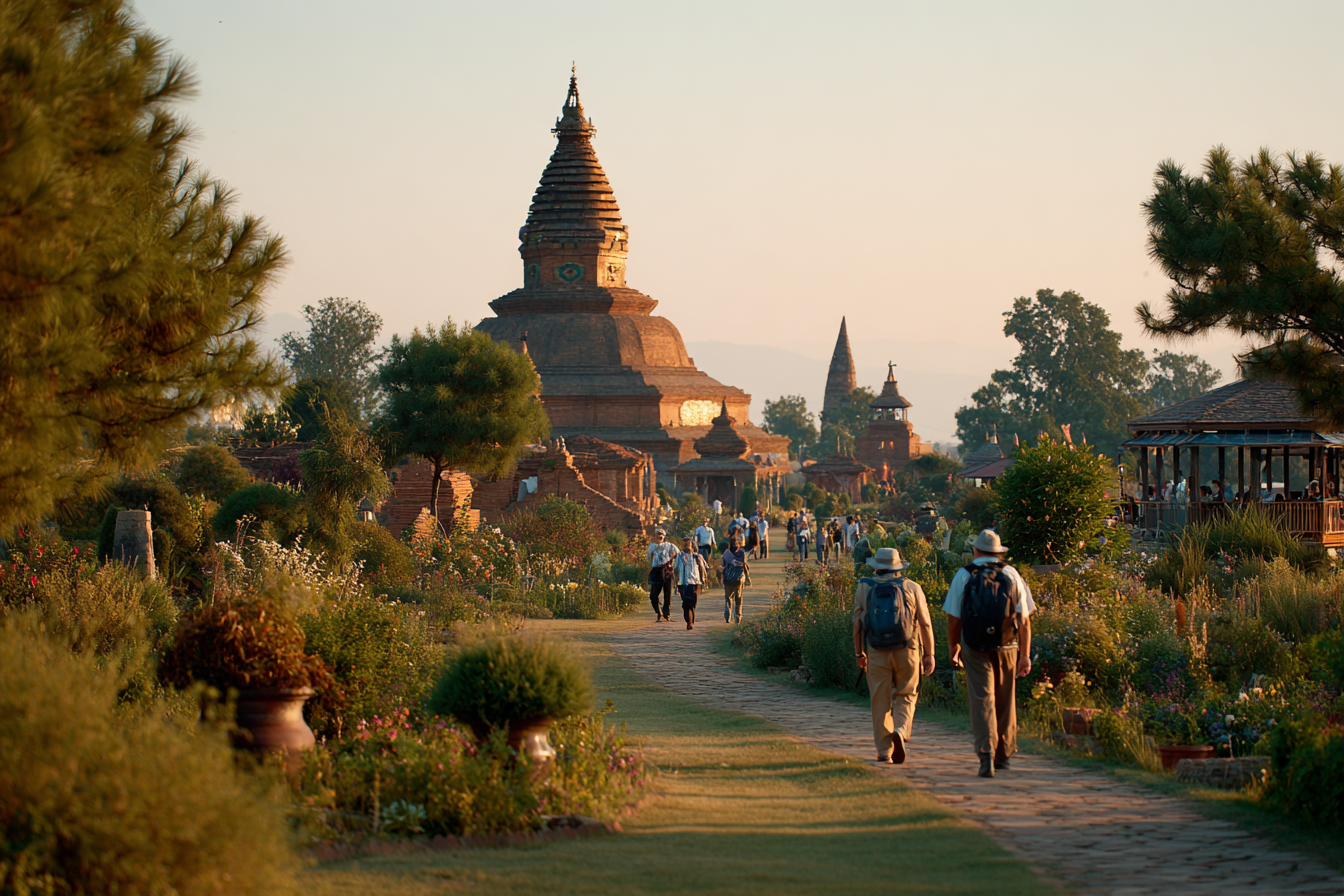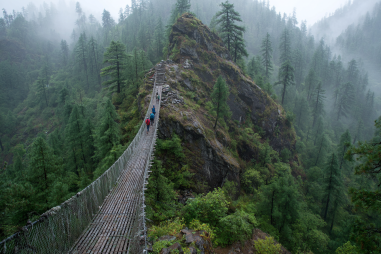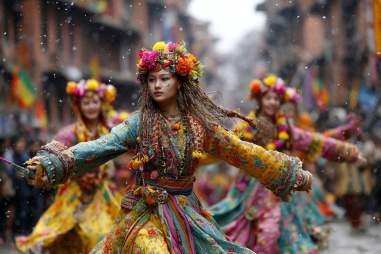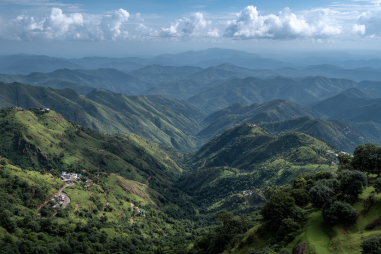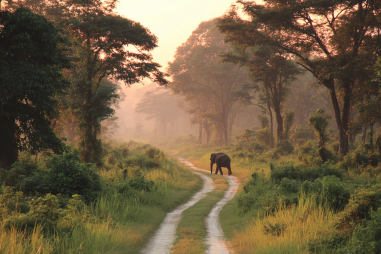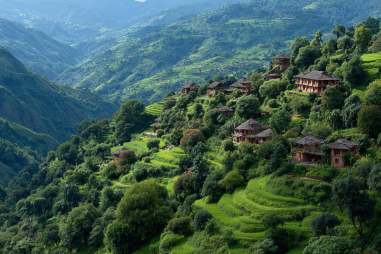Lumbini, a serene and sacred site in Nepal, is renowned worldwide as the birthplace of Lord Buddha. This tranquil destination attracts pilgrims, history buffs, and travelers seeking spiritual enrichment. While a quick visit can be rewarding, spending three days in Lumbini offers ample opportunity to soak in its rich cultural heritage, explore diverse monasteries, and engage with the local lifestyle. Whether you’re a first-timer or returning for a deeper dive, this detailed 3-day itinerary will help you maximize your experience in this peaceful pilgrimage town.
Day 1: Arrival and Visit to Maya Devi Temple and Monastic Zone
Your journey to Lumbini begins with a warm welcome and a sense of calmness that the sacred grounds naturally exude. After settling into your accommodation, your first stop should be the Maya Devi Temple. This temple commemorates the exact spot where Queen Maya Devi gave birth to Prince Siddhartha Gautama, who later became the Buddha. The temple complex contains ancient ruins, a sacred pond (Puskarini), and a beautiful garden that reflects the spiritual significance of the place.
Spend ample time here to soak in the profound history and quietude. Inside the temple, you can view the sandstone marker and archaeological remains dating back to the 3rd century BCE, highlighted by inscriptions from Emperor Ashoka.
After the Maya Devi Temple, head over to the Monastic Zone, which is divided into the Eastern and Western Monastic Zones. This area showcases numerous monasteries built by different Buddhist countries, including Japan, Thailand, Myanmar, and Sri Lanka. Each monastery reflects the architectural styles and spiritual traditions of its native country, offering a colorful mosaic of Buddhist culture and art. Walking through these zones provides insight not only into Buddhism’s global impact but also the harmonious coexistence of diverse cultures.
Day 2: Explore International Monasteries and Lumbini Museum
Dedicate your second day to further exploring the international monasteries scattered around Lumbini. Some stand out for their remarkable design, such as the Thai Monastery, known for its elaborate carvings and vivid murals, and the Chinese Monastery, which integrates traditional Chinese temple architecture with Buddhist symbolism.
Take your time visiting these monasteries, many of which host monks engaged in meditation or prayer, creating an atmosphere of peace and reflection. Don’t hesitate to respectfully interact with the monks to learn about their practices and their countries’ contributions to Buddhism.
In the afternoon, plan a visit to the Lumbini Museum, which is part of the Lumbini Development Trust. The museum houses an impressive collection of Buddhist artifacts, sculptures, relics, and photographs detailing the archaeological findings and historical significance of Lumbini. This museum provides context to everything you’ve seen at the sacred sites and deepens your understanding of Buddhism’s origins and its spread across the world.
Day 3: Cultural Experiences and Local Market Visits
Your final day in Lumbini is perfect for embracing the local culture and lifestyle beyond the spiritual sites. Start your morning by visiting the nearby villages where you can observe traditional Nepali rural life. Many local communities are happy to offer homestays or cultural programs where you might participate in crafting, cooking, or even traditional dance performances.
Afterwards, head to the local markets in Lumbini town, where artisans sell handicrafts, prayer beads, religious statues, and souvenirs. This is an excellent opportunity to pick up unique gifts or keepsakes while supporting the local economy. The markets are also a great place to sample authentic Nepali street food, such as momo (dumplings), dal bhat (lentil rice), and freshly brewed chai.
Food and Accommodation Recommendations
Lumbini offers a variety of accommodation options ranging from budget guesthouses to comfortable hotels and spiritual retreats. Popular choices include:
- Lumbini Buddha Garden Resort: Known for its peaceful environment and quality services.
- Lumbini Hokke Hotel: A comfortable stay with easy access to main attractions.
- Peace Guest House: Budget-friendly and welcoming for backpackers.
When it comes to dining, the area features several restaurants with vegetarian-friendly menus catering to Buddhist visitors. Try “The Lotus Restaurant” for traditional Nepali and Tibetan dishes, or “Nirvana Restaurant” for a more diverse menu including continental options. Don’t miss tasting the local Nepali tea and snacks during your stay for an authentic experience.
Tips for Rest and Pacing
Lumbini is ideally explored at a relaxed pace. Walking is the best way to experience the sacred sites, but the area can be extensive, so plan breaks throughout the day to rest and hydrate. Mornings and late afternoons tend to be less crowded and cooler, making them perfect for outdoor exploration. Carry comfortable footwear, sun protection, and a water bottle.
If you want to enhance your visit, consider hiring a local guide who can offer in-depth knowledge about the history, symbolism, and significance of various monuments and rituals. Remember to respect the spiritual essence of the place by dressing modestly and maintaining silence in holy zones.
Making the Most of Your Time in Lumbini
A three-day itinerary in Lumbini enables you to delve deeply into the birthplace of Buddha, absorbing its tranquil ambiance, rich history, and vibrant culture. By pacing your visit thoughtfully, exploring the majestic temples and monasteries, engaging with the local community, and savoring the authentic cuisine, you create a holistic and memorable journey.
Whether you’re traveling alone, in a group, or on a spiritual quest, Lumbini offers a timeless, contemplative experience that touches the soul and broadens your perspective on Buddhism and human heritage. This itinerary ensures you’ll leave with a profound appreciation of Lumbini’s significance and many cherished memories to carry forward.

